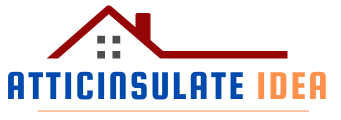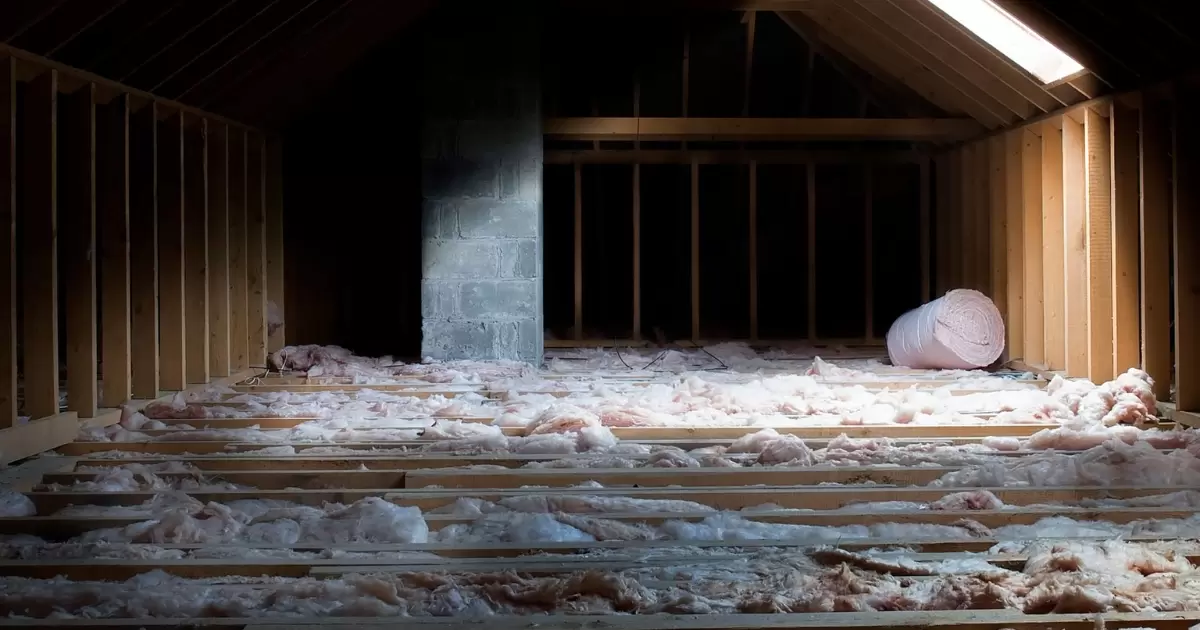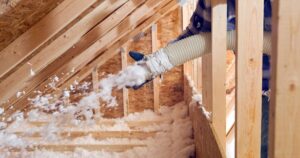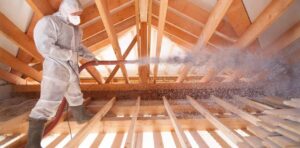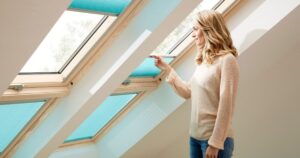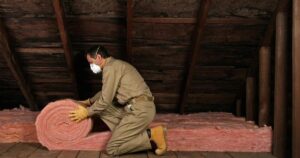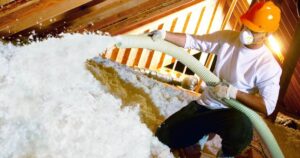Homeowners insurance is designed to protect your home from specific risks and damages. Understanding what it covers in relation to attic insulation is crucial.
Attic insulation is typically covered by homeowners insurance if the damage is caused by a covered peril, such as a sudden and accidental event like a burst pipe. Gradual wear and tear or maintenance-related issues are usually not covered. Understanding policy specifics is key to knowing if your attic insulation is protected.
It also typically offers liability coverage, protecting you if someone is injured on your property. Ultimately, homeowners insurance is designed to shield you from significant financial losses that could arise due to unforeseen circumstances, offering a level of stability and security for your home and family.
Purpose of Homeowners Insurance
Homeowners insurance serves as a safety net, providing financial protection for your home and belongings in case of unexpected events like natural disasters, theft, or accidents. The primary purpose is to offer you a sense of security and peace of mind, ensuring that if an unfortunate incident damages your home or possessions, the insurance can help cover the costs of repairs or replacements.
Coverage Under Homeowners Insurance
Homeowners insurance generally covers your dwelling, personal property, Living expenses, and liability protection. Dwelling coverage pertains to the physical structure of your home, while personal property coverage safeguards your belongings.
Living expenses coverage may help with costs if you’re temporarily displaced from your home due to a covered event. Liability protection can cover legal and medical expenses if someone is injured on your property.
The specific coverage can vary based on the policy and insurer, so understanding what your policy covers is crucial for being prepared in case of any unfortunate events. It’s advisable to review the policy details to comprehend the extent of coverage and ensure it meets your needs.
Gradual Wear and Tear
Gradual wear and tear, the natural deterioration of your home over time, is generally not covered by homeowners insurance. This includes aging-related issues like rust, rot, or general maintenance problems. Insurance is typically for sudden, unexpected events rather than issues that occur due to the aging process or lack of maintenance.
Understanding this aspect helps homeowners set realistic expectations for what their insurance will and will not cover, prompting them to take preventive maintenance measures to avoid potential problems.
Maintenance-Related Issues
Issues stemming from poor maintenance or negligence, such as pest infestations, mold, or water damage due to unaddressed leaks, are usually not covered by homeowners insurance. It emphasizes the importance of regular home maintenance to prevent these problems.
While insurance is for unforeseen events, neglecting maintenance responsibilities can lead to costly issues that insurance might not cover. It highlights the homeowner’s responsibility to properly maintain their property to avoid potential claims being denied.
Attic Insulation Coverage
Attic insulation coverage may or may not be included in standard homeowners insurance. Some policies might cover attic insulation if it’s damaged due to a covered peril, such as a roof leak caused by a storm.
Coverage often depends on the cause of the damage and the policy’s specifics. Understanding the conditions for coverage is crucial to determining if your attic insulation is protected and under what circumstances.
Conditions for Coverage
The conditions for coverage regarding attic insulation often revolve around the cause of the damage. If the damage is sudden and due to a covered peril, such as a fallen tree damaging the roof and subsequently the attic insulation, it may be covered.
If the damage is due to wear and tear or lack of maintenance, it might not be covered. It’s vital to understand the specific conditions outlined in your policy to know when and how your attic insulation is protected.
Types of Damage Covered
Homeowners insurance typically covers various types of damage caused by perils such as fire, theft, vandalism, windstorms, and more. The policy will specify what perils are covered, offering financial protection to repair or replace the affected property.
Knowing the types of damage covered helps homeowners comprehend the extent of their insurance protection and better prepare for potential risks.
Exceptions and Limitations
Despite covering various perils, homeowners insurance often comes with exceptions and limitations. Certain events or types of damage may not be covered, such as floods or earthquakes, and some items may have coverage limitations. Understanding these exceptions and limitations is crucial to filling potential gaps in coverage or seeking additional insurance policies to address specific needs.
Covered Perils Impacting Insulation
While homeowners insurance covers various perils, it’s essential to understand which perils impact insulation coverage. For example, if a covered peril, like a fire, damages the insulation, it might be covered.
If the damage is due to an excluded event or gradual wear and tear, it may not be covered. Understanding how different perils affect insulation coverage is crucial for homeowners to know what to expect from their insurance.
Exclusions and Uncovered Damages
Insurance policies often have specific exclusions detailing what types of damages are not covered. These can include certain natural disasters like floods or earthquakes, neglect-related damages, and specific high-value items. Understanding these exclusions helps homeowners recognize potential gaps in their coverage and take necessary steps to address those gaps.
Understanding Policy Specifics
To ensure homeowners maximize their insurance benefits, understanding policy specifics is crucial. Reviewing the details of the policy, such as coverage, limitations, and exclusions, enables homeowners to make informed decisions, ensuring their property and possessions are adequately protected.
Reviewing Insurance Policy
Regularly reviewing the insurance policy helps homeowners stay informed about any changes in coverage, ensuring it adequately meets their needs. It also assists in identifying potential gaps or limitations, prompting adjustments or additional coverage if necessary.
Contacting Insurance Provider
If there are uncertainties or questions regarding coverage, contacting the insurance provider for clarification is essential. This helps homeowners gain a better understanding of their policy, ensuring they know what to expect in case of damage or loss.
Seeking Clarification on Coverage
Seeking clarification on specific coverage details, especially regarding items like attic insulation, can provide homeowners with a clear understanding of what is protected and under what circumstances. This clarity enables better preparedness and decision-making.
Conclusion
Understanding the nuances of homeowners insurance coverage is crucial. It allows homeowners to comprehend what is protected and under what circumstances, empowering them to take necessary precautions and make informed choices to mitigate risks effectively.
Ensuring protection for attic insulation involves understanding the specific conditions for coverage and potential exclusions. This knowledge helps homeowners take proactive steps to protect and maintain their attic insulation and, if needed, seek additional coverage for better protection.
FAQ’s
Does Homeowners Insurance Cover Attic Insulation?
Homeowner’s insurance policies generally cover destruction and damage to a residence’s interior and exterior, the loss or theft of possessions, and personal liability for harm to others.
What are the 5 elements of property insurance?
These elements are a definable risk, a fortuitous event, an insurable interest, risk shifting, and risk distribution.
Conclusion
Homeowners insurance does not cover the replacement or repair of attic insulation unless the damage is caused by a covered peril specified in the policy. If the insulation is damaged due to a covered event like a fire, vandalism, or a sudden and accidental water leak, then the insurance might cover the cost of replacing the insulation.
Some insurance providers offer endorsements or riders that can be added to the policy to cover specific situations or perils that are not included in the standard coverage. To ensure adequate protection, homeowners should regularly review their policies and discuss available options with their insurance provider.
